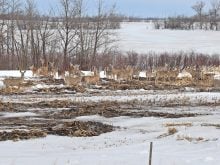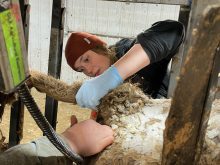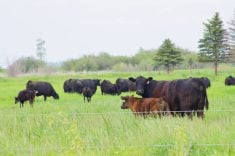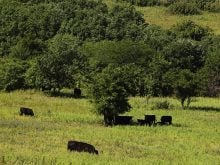Beef feedlots depend on pen checkers. In turn, pen checkers depend on their knowledge and skill and, if they have one, their horse.
Tips on how to do a better job monitoring cattle were recently presented in a booklet prepared by Schering-Plough/Intervet.
There are two types of feedlot pens: settled and hot.
Hot pens contain new arrivals and tend to have the most problems with bovine respiratory disease (BRD), especially in the first one to three weeks after arrival. These pens are best supervised by experienced pen checkers.
Read Also
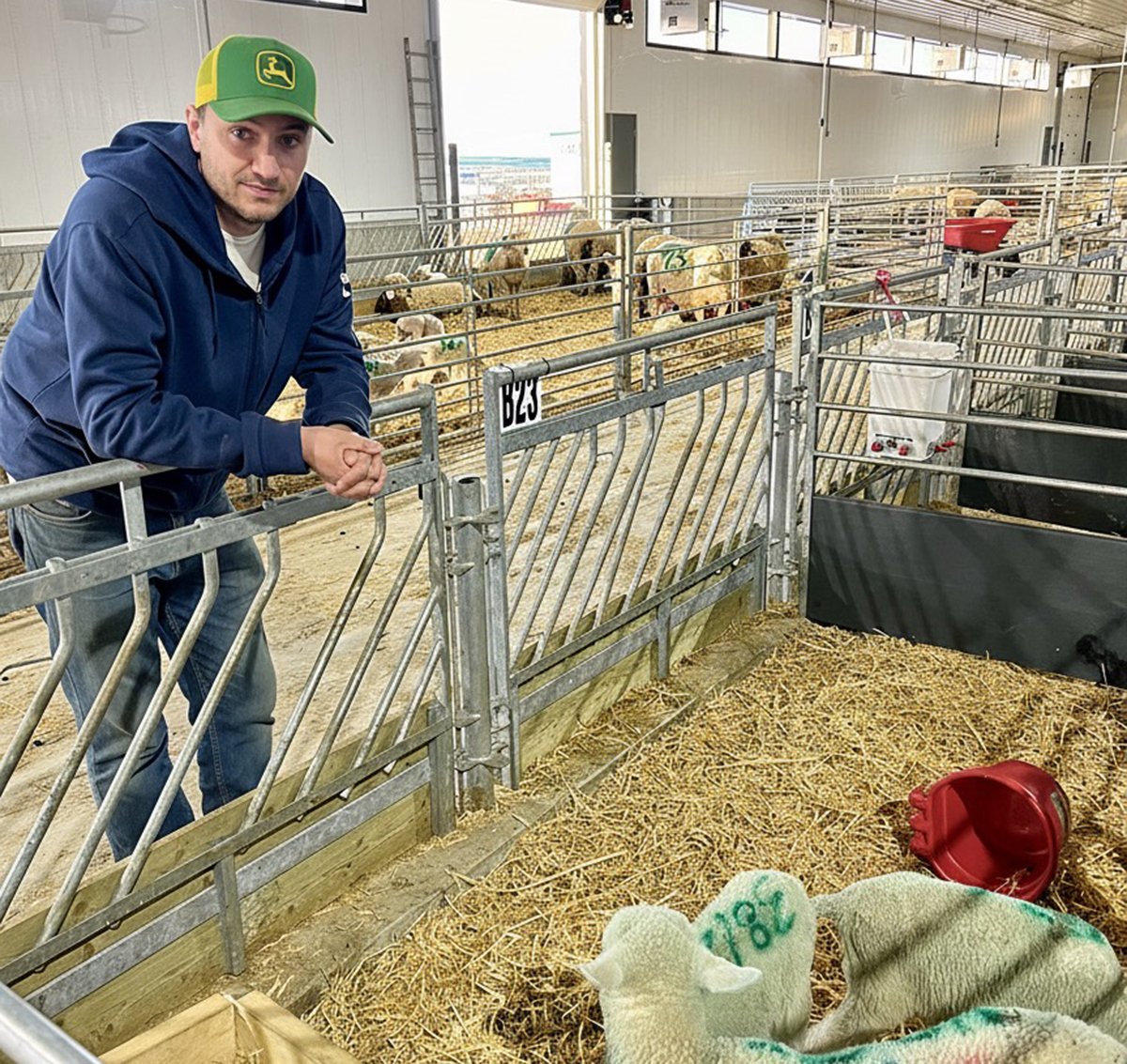
Solar, sheep provide valuable farm diversification
Eric Steeves says raising sheep on forages grown under solar panels provided economic stability and perhaps even saved his family’s fifth generation southern Alberta grain farm.
The settled pens have been on feed for more than six weeks. With fewer health problems, they are ideal for beginning pen checkers to watch.
The best way to check pens is on horseback. It gets checkers closer to the cattle and doesn’t disturb them as much as pen checkers on foot. It also allows checkers to do the stress walk described later. Don’t let horses eat from the bunks while in the pens because cattle feed can sometimes contain additives that harm horses.
When you want to check a pen, start watching before you get to the fence. Cattle are prey animals, so they move in herds. As soon as a threat is evident, sick calves blend into the herd and mask their illness so they can’t be singled out and eaten by a predator.
By standing back, you can watch them behaving naturally and catch a calf looking sick.
The next stage is entering the pen. The goal of the intrusion is to eventually get every calf up on its feet. This is done by slowly walking the pen in a crisscross pattern.
Now is not the time to start pulling cattle. You want to identify sick animals before disturbing them. Just make notes on which cattle are a concern.
The stress walk is a trick that experienced pen checkers use. If they see a calf that looks like it needs treatment, they walk toward it, forcing it to get up. They then follow it for about 90 metres, which should take about a minute and a half.
Look for signs of BRD during the walk, including a cough, staggering or weakness in the hind end, a head that wobbles from side to side, puffiness under the eyes and perhaps drooling at the end of the test.
The most important sign to look for, however, is at the end of the walk when you stop the horse and “drop” the calf. Healthy calves are wary and take a second to see if you have stopped and if they are safe. If the calf does not look back and continues to look ahead, it likely is sick.
Because BRD is the most common disease in feedlot cattle, it helps to know what symptoms to look for:
- Calves with the mildest form – a subclinical infection – do not show signs and are able to fight it off themselves. They don’t need treatment.
- Some calves are slightly off but have a clean nose and their guts are filled. The stress walk is ideal for identifying these calves because they will show signs.
Calves with full-blown BRD are more obvious. They stand with closed eyes, a hunched back and a dirty nose and are not filled out in the abdomen. Calves with early disease and those with full BRD both need treatment.
- There are also some cattle that fail to respond to treatment and have chronic BRD. These cattle rarely recover, at least from an economic perspective.
Once all the pulls are identified, it’s time to move them out. Use your range of influence by getting close to the calf and using your presence to entice the calf to move toward the gate. Don’t rush. You don’t want to get the pen worked up or stress the cattle.
When the calf is in the treatment area, take its temperature and follow the feedlot treatment protocol, which should have been designed in advance with a veterinarian. Once the treatment is finished, slowly return the calf to its pen. Stressing them can make them sicker. Some need to go to a recovery pen if pen mates are harassing them.
If you don’t have a horse and are checking on foot, use a sorting stick to keep cattle from crowding you, and make sure someone knows where you are. You may want to take a cell phone in case you run into trouble. Have an escape route in mind, such as a fence you can easily climb over.
Your skill and attention to detail will determine the success of treatment. Learn what to look for and take the time to watch the cattle. Never be in a hurry.


